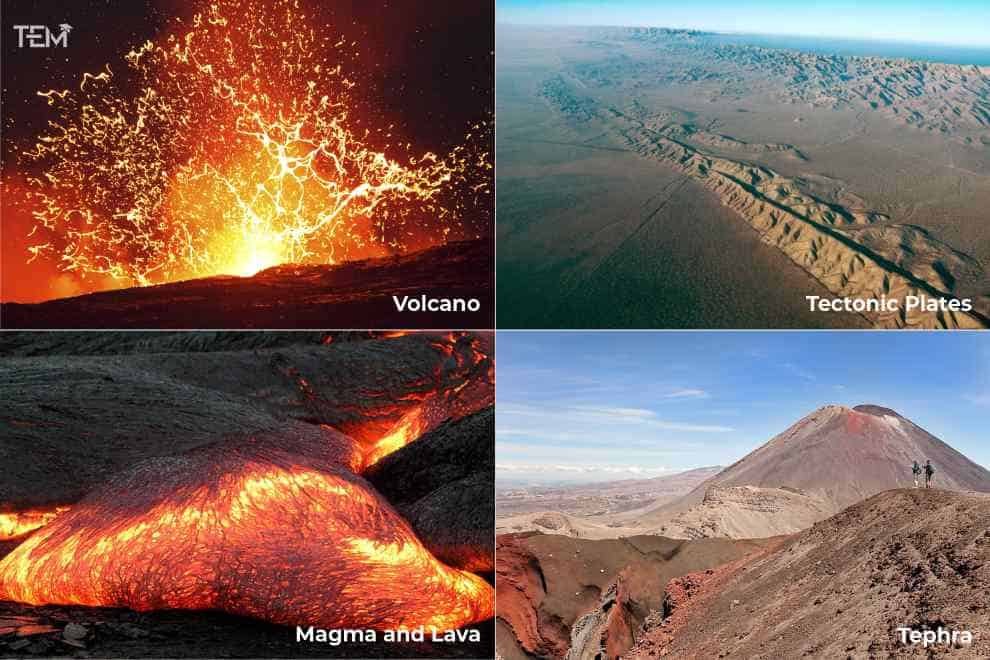What causes a volcano to erupt? Is it because of the buoyancy of the magma, the pressure built inside the magma plate, or a gigantic mixture of baking soda and vinegar? Let’s find the answer to the question in this blog!
Recently, thousands of people have fled their homes near a Philippine volcano after an eruption sent ash and steam hundreds of meters into the sky. This incident of the volcanic eruption in the Philippines has certainly sent shivers down our spine, but it is more than what meets our eyes.
A volcanic eruption is quite a sight to behold. It can be mesmerizing as well as furious depending on the intensity of eruption and flow of the larva. For years, scientists have been trying to study the nature of volcanic eruptions and what causes a volcano to erupt. However, they are yet to predict a volcanic eruption.
Before we explain how or what causes a volcano to erupt, let us understand a few terminologies and facts that are associated with volcanic eruptions.
Definition of a volcano and volcanic eruption

1. Volcano:
Basically, volcanoes are openings or vents where lava, tephra, and steam erupt out onto the earth’s surface.
2. Magma and Lava:
Magma is the molten rock that is trapped beneath the earth’s surface. When this molten rock makes it to the surface and keeps flowing like a liquid, it is known as Lava.
3. Tephra:
Tephra is the rock fragments and particles that are ejected by a volcanic eruption.
4. Tectonic Plates:
A tectonic plate is a massive and irregularly shaped slab of solid rock composed of continental and oceanic lithosphere. Also called lithosphere plates, these plates can vary in size. Some of these can be as big as a few hundred to thousands of kilometers, while others can be as huge and wide as the distance between the Pacific and Antarctic plates. Tectonic plates also vary in thickness, ranging from less than 15 km for young oceanic lithosphere to about 200 km or more for ancient continental lithosphere.
Now that we are familiar with the terms associated with volcanic eruptions, let’s see what causes a volcano to erupt.
What causes a volcano to erupt?
The major reason behind the eruption of a volcano is the increase in pressure on the chamber lid that causes the magma to be released from beneath it. However, the cause of a volcanic eruption may vary according to the magma movement and the type of eruption generated.
Generally, volcanoes are found near the boundaries of the Earth’s tectonic plates. These plates can either spread apart or leave a gap on the surface. Or, they can push underneath one another (a process called subduction). When the plates separate, the magma slowly rises to fill the gap through a gentle explosion of thin basaltic lava (whose temperature ranges between 800-1200 degrees Celcius). However, when one plate pushes underneath the other, this forces molten rock, sediments, and seawater into the magma chamber. The rock and the sediment melt down into fresh magma and eventually overfill the chamber until it erupts. As a result, it releases sticky and thick andesitic lava (ranging from a temperature between 800-100 degrees Celsius).
There are several factors that cause a volcanic eruption. Plate tectonics is, however, not the only cause of eruptions. Decreasing temperatures can cause old magma to crystalize and sink to the bottom of the chamber, forcing fresh liquefied magma up and out – similar to what happens when a brick is dropped in a bucket of water. A decrease in external pressure on the magma chamber may also allow for an eruption by minimizing its ability to hold back increasing pressures from the inside. This is often caused by natural events, such as typhoons, that decrease rock density, or by glacial melting on top of the chamber lid, which alters molten rock composition. So-called ‘hot-spot’ volcanoes are ones that form away from tectonic plate boundaries. They are created as plates move and expose hot uprisings from Earth’s mantle, known as plumes.
In a nutshell:
Over several years, many mountains form by folding, faulting, and erosion of the earth’s crust. Volcanic terrain, however, is built by the slow accumulation of erupted lava. The vent may be visible as a small bowl-shaped depression at the summit of a cone or shield-shaped mountain.
Through a series of cracks within and beneath the volcano, the vent connects to one or more linked storage areas of molten or partially molten rock (magma). This connection to fresh magma allows the volcano to erupt over and over again in the same location. In this way, the volcano grows ever larger, until it is no longer stable. Pieces of the volcano collapse as rock falls or as landslides.
Now that we know what causes a volcano to erupt, let’s have a look at the factors that determine a volcanic eruption.
Learn the Inside-outs of a volcano
1. What are the types of volcanoes?
There are various types of volcanoes. Based on their types and formation, there are 3 classic types of volcanoes:
● Cinder Cone Volcanoes

Cinder Cones are the simplest type of volcano and are built from particles and blobs of congealed lava ejected from a single vent. They are commonly found in western North America as well as throughout other volcanic terrains of the world.
● Composite Volcanoes (Stratovolcanoes)

Some of the earth’s grandest mountains are composite volcanoes. Otherwise known as Stratovolcanoes, these are typically steep sides with symmetrical cones of large dimensions. These are built of alternating layers of lava flows, volcanic ash, cinders, blocks, and bombs. Examples of composite volcanoes include Mount Fuji in Japan, Mount Shasta in California, Mount Hood in Oregon, and others.
● Shield Volcanoes

Shield volcanoes are built almost entirely of fluid lava flows. They are built up slowly by the accretion of thousands of highly fluid lava flows called basalt lava that spread widely over great distances, and then cool as thin, gently dipping sheets. Mauna Loa and Kilauea are examples of shield volcanoes.
● Lava Domes

Volcanic or lava domes are formed by relatively small, bulbous masses of lava too viscous to flow any great distance; consequently, on extrusion, the lava piles over and around its vent. They commonly occur within the craters or on the flanks of large composite volcanoes. Examples include the Novarupta Dome formed during the 1912 eruption of Katmai Volcano, Alaska.
Based on their eruption activity, there are 3 types of volcanoes:
- Active volcanoes (have a recent history of eruptions and are likely to erupt again)
- Dormant Volcanoes (not erupted for a long time but may erupt in the future)
- Extinct Volcanoes (not expected to erupt in the future)
2. What were the recent deadliest volcanic eruptions in 2022?

The below-mentioned volcanic eruptions have been noted as the most volatile volcanic eruptions:
- Piton de la Fournaise, France (22 Dec, 2021-17 Jan, 2022)
- Hunga Tonga-Hunga Ha’apai, Tonga (5 Dec 2021- continuing)
- Ambae, Vanuatu (5 Dec 2021- continuing)
- Pinatubo, Philippines (30 Nov, 2021)
- Iliwerung, Indonesia (28 Nov, 2021- 29 Nov, 2021)
3. What are the impacts and effects of volcanic eruptions?
Depending on their eruption intensity and flow, volcanic eruptions can have minor to major impacts on the surrounding residents as well as on the climate.
Some of the common effects of volcanic eruptions are:
- Explosive ashes ejected during the eruption can cause visual impairment in humans.
- The smoke exiting during an eruption makes the air chemically toxic for breathing.
- The lava ejected during the eruption can burn down plants and other ecosystems.
- The emission of volcanic gases modifies the composition of the atmosphere. If the gases reach higher altitudes, the effects are particularly strong and long-lasting.
What causes a volcano to erupt? We believe you have a definite answer to the big question now. Volcanic eruptions are harmful to the environment as much as they are to humans. Although scientists are attempting to predict an eruption before its occurrence, it can be regarded as another mystery of nature that will take years to decode this majestic natural enigma.
ALSO READ: 25 Alluring Facts about NASA that will feed your Curiosity










